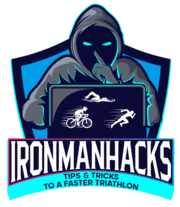My coach always gives me test rides in my training plan on the day before any race. These rides are meant to not only get a feel for the race environment, climate, and surfaces, but to do an equipment check.
I was doing one such ride at the 2019 Half Ironman World Championship in Nice, France. Everything felt good, as usual, but there was one little glitch with my braking. As I stopped, I could feel a very small bit of movement in my headset. It was so minor that it really didn’t bother me, but the race I was about to do had some serious hills.

I wasn’t worried about the bike’s integrity climbing up the hills. It was the descending that had me concerned. I was lucky enough to have my parents at the race, and my mom asked me, “What’s the worst-case scenario you could have with a loose headset?”
I replied, the ever-sensitive son, with “Sudden death.” Probably not the best answer to assuage your mother, but I think it was true.
I imagined the entire front-end – fork, wheel, bars – separating from the frame and my body and the remains of my bike catapulting at breakneck speed around a blind corner with a cliff on the other side. That was kind of what I thought could happen.
“Can you please have a look at my headset?” I asked the Ironman mechanic in the race village, after waiting 45 minutes in a queue with other athletes who had their own problems. “I think it’s loose.” “Yes, we’ll have to take it apart. Please come back after 2:30.”
Anxious but excited to have a bike that was back at 100%, I returned. “We can’t even open your headset. It’s too corroded. We even took it to the Canyon tent and they told us the best fix was to send it to Germany,” the mechanic explained.
Was he serious or was this some level of French humor I didn’t yet know about? “But is it safe to ride?” I asked. “Hmm I think so, if it were my bike I’d still ride it,” the mechanic replied, only semi-reassuringly.
So I rode it, quite conscious of the problem, still with that terrifying image of myself on a disintegrating bike hurtling at 60 km/h over a cliff. There was no problem.
And although I didn’t get it resolved before the race, you get the point. Had he told me I shouldn’t have ridden it, I could have rented a bike then and there, and I would have put safety first.
So the message is clear: Ride your bike before race day and make sure it’s all sorted out.
